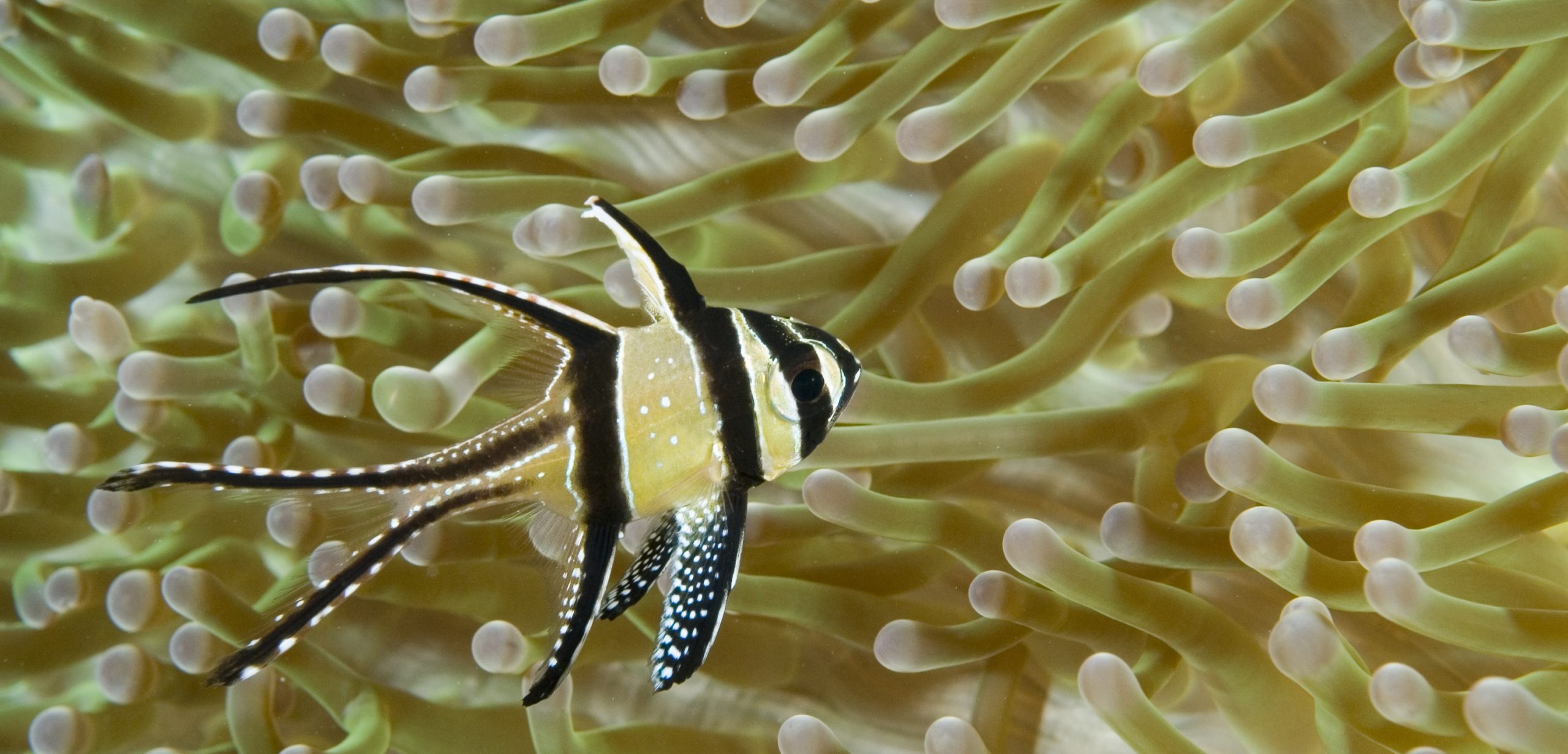The Price of Rejection
New research uncovers hidden losses in the aquarium fish trade.
Article body copy
Export data and international trade records have long suggested that millions of fish caught for home aquariums die along the complex supply chain from fish wholesalers to hobbyists’ tanks. But these trade statistics, in many cases the only source of information available, omit a crucial stage in the aquarium fish industry: what happens to fish before they start that long journey up the supply chain. Now, a new study has revealed that at least a quarter of the home-aquarium-bound fish caught in Papua New Guinea are rejected, and usually dumped back in the ocean, with negative consequences for the environment. It’s a toll that, until now, had been largely overlooked.
Thane Militz, an aquaculture researcher from the University of the Sunshine Coast in Sippy Downs, Australia, says the results are both surprising and concerning.
“Crunching the numbers to reveal a 24 percent rejection frequency was a humbling experience,” he says, adding that researchers expected to see a much lower rate.
The team found that roughly one out of every four reef fish collected for the aquarium trade by fishers in Papua New Guinea was rejected by buyers from the exporting company EcoEZ Inc. For some types of fish, the rate was even higher—cardinalfish, for instance, had a rejection rate of more than 54 percent. The most common reasons for rejection were fin damage, or undersized or emaciated fish.
The scientists suggest that rejection rates might be even higher in less-managed fisheries.
Militz says this study is just the first step in looking at aquarium fish rejections. Next, he’d like to explore what’s happening in other communities, “to determine whether fish rejections reported in the current study are the norm or the exception,” he says.
But there’s reason to believe that Papua New Guinea’s fish rejection rates are representative, if not lower than average.
In 2008, fishers in Papua New Guinea contracted a US-based consulting firm to design a sustainable management plan for harvesting and exporting aquarium fish. The Papua New Guinean government then spent US $5-million over three years managing and monitoring the aquarium fishery.
“On top of this, collection was done via ‘catch to order,’” meaning buyers for the exporter placed orders for the species of fish they wanted, Militz says. “Fishers were trained to [Marine Aquarium Council] standards, and there was no evidence of chemical use or damaging fishing practices ever occurring.” With so many resources available, Militz says researchers expected to see a much lower rejection rate.
“We could only assume other village-based fisheries without access to the same set of resources would have higher rejection frequencies,” he says.
To reach their conclusion, the researchers drew on data recorded by Papua New Guinea fisheries managers in 2010. That data showed that of the 13,892 fish collected in a six-month period, 24.2 percent were rejected. Interestingly, the scientists also found that even though fishers were receiving feedback explaining the reasons for rejections, the fishers’ performance did not change, and there was no improvement in rejection frequency over time.
Aside from concerns about cruelty and waste, rejections can have other consequences. Rejected fish that are returned to the reef can transmit disease, lead to unnatural gene flow, and establish invasive species populations, the researchers note.
Reef fish advocate Rene Umberger, director of the nonprofit For the Fishes, says the findings are alarming. While mortality rates in the aquarium trade have been studied before, this is the first in-depth look at rejection rates by buyers at the point of capture, she says.
“It’s deplorable,” she says. Aquarium fish go through a “chain of custody that might have eight different steps. This is the first step in that chain of custody, and you’re looking at an astronomical rate.”
In 2010, Papua New Guinea cut ties with the company managing its fishery and shut down the program. But that country is just one of many involved in the aquarium fish trade, and as the researchers suggest, what was happening in Papua New Guinea is likely happening in other countries as well.

